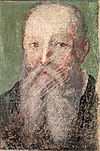
Jacint Rigau-Ros i Serra, known in French as Hyacinthe Rigaud, was a Catalan-French baroque painter most famous for his portraits of Louis XIV and other members of the French nobility.

Jean-Baptiste Carpeaux was a French sculptor and painter during the Second Empire under Napoleon III.

Joseph-Marie Vien was a French painter. He was the last holder of the post of Premier peintre du Roi, serving from 1789 to 1791.

The Louis XV style or Louis Quinze is a style of architecture and decorative arts which appeared during the reign of Louis XV. From 1710 until about 1730, a period known as the Régence, it was largely an extension of the Louis XIV style of his great-grandfather and predecessor, Louis XIV. From about 1730 until about 1750, it became more original, decorative and exuberant, in what was known as the Rocaille style, under the influence of the King's mistress, Madame de Pompadour. It marked the beginning of the European Rococo movement. From 1750 until the King's death in 1774, it became more sober, ordered, and began to show the influences of Neoclassicism.

Joseph-Siffred Duplessis was a French painter known for the clarity and immediacy of his portraits.

Nicolas Bernard Lépicié was a French painter and teacher of painting, the son of two well-known engravers at the time, François-Bernard Lépicié and Renée-Élisabeth Marlié. Lépicié was famous in his lifetime, and compared to Chardin and Greuze.

Nicolas-Jean-Baptiste Raguenet was a French painter born in Gentilly.
René Drouard de Bousset was a French Baroque composer and organist. He was born in Paris on 12 December 1703.

Philippe-Auguste Jeanron was a French painter, curator and writer. Throughout his life he was a passionate republican. His genre pictures typically depicted common people. He opposed the July Monarchy. After the February Revolution of 1848 was made head of National Museums and Director of the Louvre, where he introduced important innovations in the preservation, classification and arrangement of the collections. Later he became director of the museum in Marseilles.

The House of Spoelberch is a distinguished Belgian noble house. The family was also part of the Nobility of the Holy Roman Empire and today it is legally recognized as being part of the Belgian nobility.

Everhard or Eberhard Jabach was a French businessman, art collector, and director of the French East India Company. He was born in Cologne in the Holy Roman Empire but later naturalised as a French subject.
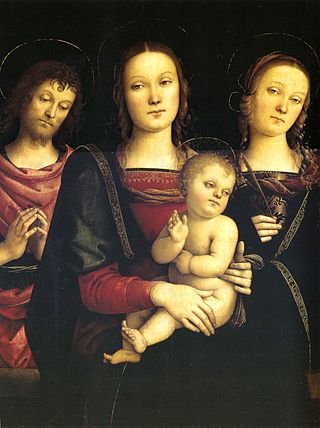
Madonna and Child with St John the Baptist and St Catherine of Alexandria is a c.1495 oil on panel painting by Perugino of the Madonna and Child with John the Baptist and Catherine of Alexandria. It is now in the Louvre in Paris.
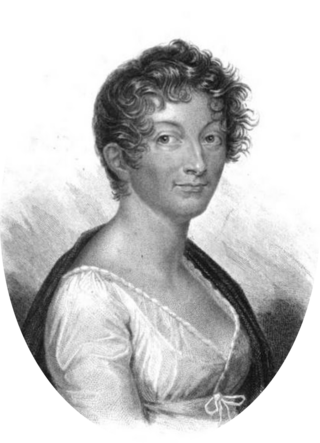
Pauline de Meulan was a French writer and journalist, known especially for her work on education and her liberal position in the aftermath of the French Revolution. French literary critic Sainte-Beuve described her as the best and most important moralist since Jean-Jacques Rousseau.
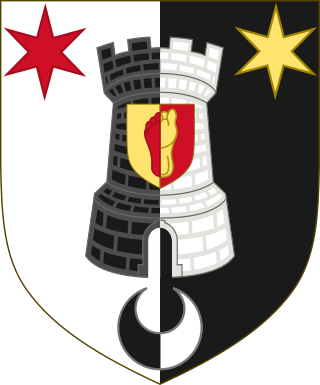
The Van Dievoetfamily is a Belgian family originating from the Duchy of Brabant. It descends from the Seven Lineages of Brussels and its members have been bourgeois (freemen) of that city since the 1600s. It formed, at the end of the 17th century, a now extinct Parisian branch which used the name Vandive.
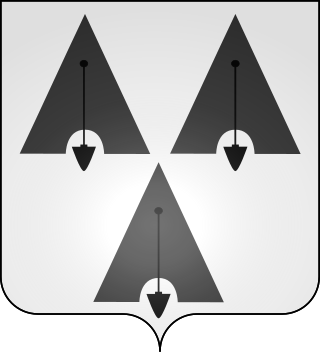
The Wittouck family (/witʊk/) is a noble Belgian family, that descends from the Seven Noble Houses of Brussels, established in Brussels since the 18th century.

The Holy Family with Saint John the Baptist and an Angel is a religious painting by the Italian Renaissance artist Giovanni Antonio Bazzi aka Il Sodoma, dated to c. 1535–1540. It is now in the Musée des Beaux-Arts of Strasbourg, France. Its inventory number is 351.

Holy Family, also called The Rest on the Flight into Egypt, is an oil on canvas painting by the French Rococo artist Antoine Watteau, now in the Hermitage Museum, Saint Petersburg. Variously dated between 1714 and 1721, Holy Family is possibly the rarest surviving religious subject in Watteau's art, related to either the Gospel of Matthew, or the Gospel of Pseudo-Matthew; it depicts the Virgin, the Christ Child, and Saint Joseph amid a landscape, surrounded by putti.

Jean-Baptiste-Pierre Le Brun was a French painter, art collector and art dealer. Simon Denis was his pupil.

The Virgin and Child with Saint Anne is a cartoon said to have been created by Leonardo da Vinci as part of his "Virgin and Child with Saint Anne" project, and now considered lost. It is known from a letter written on April 3, 1501, by Fra Pietro Novellara, Isabella d'Este's envoy to the painter. For this reason, it is sometimes referred to as "Fra Pietro's cartoon". Although still hypothetical, its existence seems to be confirmed by paintings by Raffaello and Andrea del Brescianino that are said to have been made from it, as well as by various pencil studies.
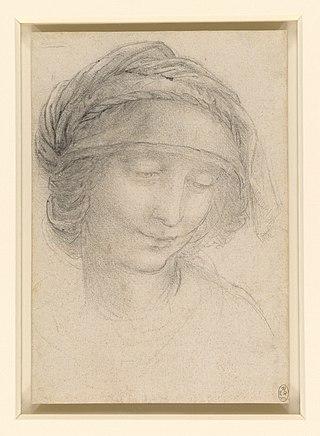
The Study for the Head of Saint Anne is a drawing on paper executed in black stone by Leonardo da Vinci and preserved at Windsor Castle. It is a portrait of a woman, and is considered to be the preparatory study for the head of Saint Anne in the painting Sainte Anne, la Vierge et l'Enfant Jésus jouant avec un agneau in the Louvre Museum.





















